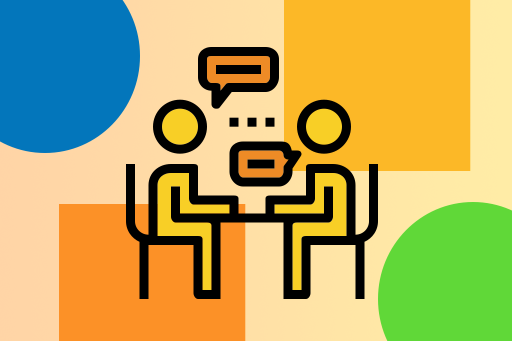Why Use UML?
Benefits of UML in Software Design
Introduction
Before a school is built, blueprints are drawn. Before a novel is written, outlines are sketched. And before a software system is developed, we need a way to plan and communicate the structure and behavior of that system. That’s where UML (Unified Modeling Language) steps in.
UML isn’t just a diagramming tool. It’s a language — a visual one — that bridges the gap between ideas and execution. Whether you're a student trying to understand object-oriented programming or an engineer designing enterprise software, UML helps you clarify your vision, analyze your design, and communicate with your team.
What is UML?
UML helps you answer fundamental questions:
- What components does this system have?
- How do these components interact?
- Who uses this system and how?
- How will the system behave under different conditions?
Why Use UML?
Let’s dive into the reasons why UML is used.
1. Visualizing the System Clearly
Humans think better visually. Instead of scanning through hundreds of lines of code, UML lets us see the structure and flow of a system in a snapshot. A diagram of students, teachers, and classes tells a richer story than a page of class definitions.
2. Bridging Communication Gaps
Software projects involve more than just developers — business analysts, stakeholders, testers, and clients all play a part. UML provides a common vocabulary for everyone to understand the system, no matter their technical background.
For example, a use case diagram showing how a student registers for a course communicates intent more effectively than a block of backend logic:
3. Encouraging Better System Design
Modeling with UML nudges developers to think before coding. Instead of rushing into implementation, they’re encouraged to analyze use cases, define relationships, and model interactions. This leads to systems that are more modular, scalable, and maintainable.
// Example: Modeling before coding
Class Student {
String name;
List enrolledCourses;
}
Class Course {
String courseName;
Teacher instructor;
}
This simple model forces us to ask: What data belongs in which class? What type of relationship is needed — association, aggregation, or composition? UML helps crystallize these decisions.
4. Supporting Software Development Lifecycle (SDLC)
UML supports different stages of the SDLC — from gathering requirements to designing, coding, testing, and maintenance.
- During Requirements: Use case diagrams capture what the system should do.
- During Design: Class and sequence diagrams define system architecture.
- During Testing: Activity diagrams model system behavior under test cases.
- During Maintenance: Diagrams act as living documentation for understanding changes.
5. Enhancing Reusability and Maintainability
A well-modeled system leads to loosely coupled components — where each class or module does one thing well. UML reveals redundancy and tight coupling early in the design, making it easier to refactor or extend the system later.
Imagine the school system adding a new feature: online exams. With UML, we can easily model how this feature integrates with existing classes like Student, Teacher, and Exam.
6. Serving as Long-Term Documentation
Code tells you what the system does, but models tell you what the system means. UML diagrams serve as long-term documentation that helps future developers, even years later, understand the architecture without diving deep into the codebase.
Imagine joining a project where there’s no documentation — only source code. Now compare that to a project with a folder of UML diagrams. Which one would you rather work on?
7. Enabling Tool Support and Code Generation
Modern IDEs and modeling tools (like StarUML, Visual Paradigm, and Enterprise Architect) allow you to generate code from UML diagrams or even reverse-engineer UML from code.
In a Java project, you might use a UML class diagram to auto-generate boilerplate code for entity classes like:
public class Student {
private String name;
private int id;
private List courses;
// Getters and setters
}
This speeds up development and reduces human error in translating design into code.
8. Helping with Team Collaboration
When working on a team, especially distributed teams, UML diagrams offer a shared design reference. Team members can review diagrams asynchronously, leave comments, and stay aligned on architectural decisions.
Examples: School System Walkthrough
Use Case Example
Actors: Student, Teacher, Admin
- Student registers for course
- Teacher uploads marks
- Admin adds new subjects

Class Diagram Example
Class Student {
String name;
String rollNo;
List subjects;
}
Class Subject {
String subjectName;
Teacher teacher;
}
Class Teacher {
String name;
List subjectsTaught;
}

Explanation:
- Student has a list of Subject objects: represented as a one-to-many association (1 --> *).
- Each Subject has a single Teacher: one-to-one relationship.
- A Teacher can teach multiple Subject instances: one-to-many association.
Misconceptions About UML
- “UML is only for big projects.”
Even small apps benefit from clear design. UML is scalable. - “UML takes too much time.”
A few hours of modeling can save weeks of refactoring. - “You need to be an expert to use UML.”
Not true — anyone can start with use cases and class diagrams.
When to Use UML
UML is best used:
- Before starting a new feature or project
- When explaining architecture to new team members
- During code reviews to discuss design trade-offs
- While documenting APIs or business logic
Best Practices for Using UML
- Start simple. Focus on clarity over completeness.
- Collaborate with peers. Use diagrams in team discussions.
- Keep diagrams updated. Treat them as live documents.
- Choose the right diagram. Use class diagrams for structure, sequence diagrams for behavior, etc.
- Use consistent naming. This improves readability and reduces confusion.







Comments
Loading comments...